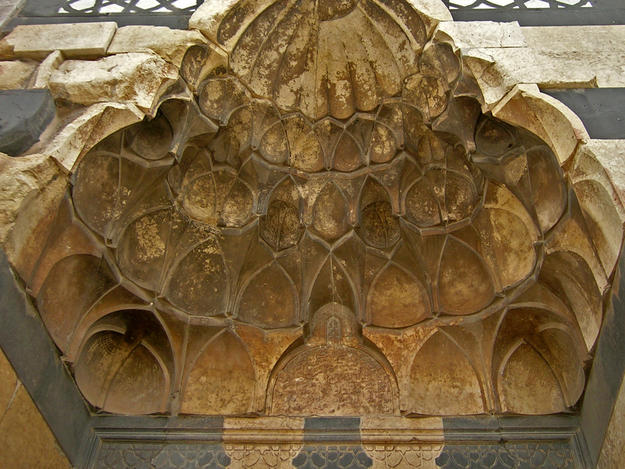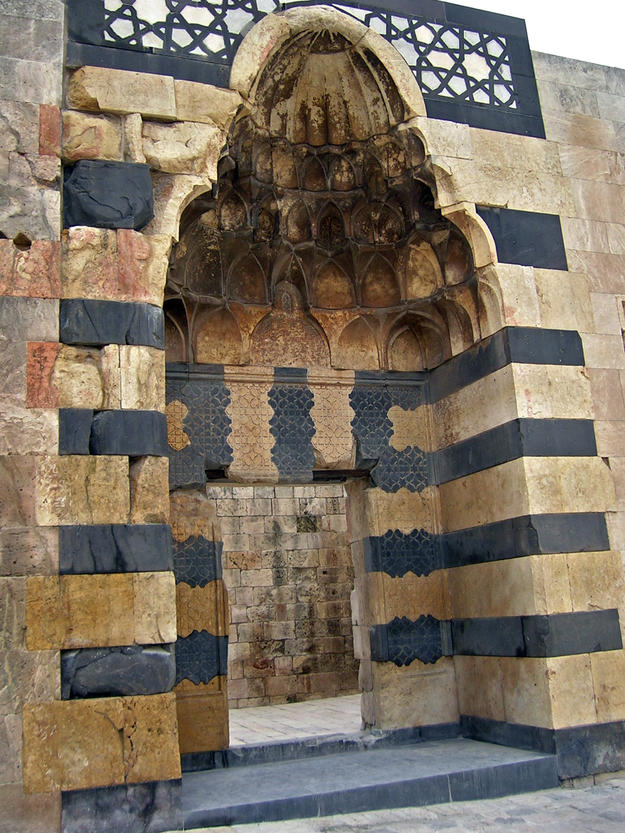Ayyubid Palace Complex in the Citadel of Aleppo
Background
Aleppo is one of the oldest continuously inhabited centers of human settlement and has flourished for millennia. Positioned high above the modern city, the Citadel of Aleppo was a strategic defensive location between Mesopotamia and the Mediterranean Sea. The Citadel of Aleppo represents a palimpsest of evidence of occupation from the Hittite, Hellenistic, Roman, Byzantine, Zangid, Ayyubid, Mamluk, and Ottoman periods. It was under Ayyubid rule that the citadel reached its greatest peak, after Salah ad-Din (Saladin), the founder of the Ayyubid dynasty, succeeded in capturing Aleppo in 1182. Strongly fortified for protection from the Crusaders and local raiders, Aleppo became a brilliant example of medieval Islamic military architecture. A complex of palaces, baths, and gardens was constructed for the new rulers of the city. Medieval sources praise the magnificence of the Ayyubid palace, which was rebuilt after a fire in 1212, only to be destroyed during the Mongol sack of Aleppo in 1260. Near the palace, the Ayyubid Cistern is an underground hall, partly carved out of the limestone rock on which the citadel is built. Accessed by a long staircase, the barrel-vaulted roof of the hall is supported on four massive pillars.
How We Helped
WMF included the Citadel of the Aleppo in the 2002 World Monuments Watch and collaborated with the Aga Khan Trust for Culture and Syria’s Directorate General of Antiquities and Museums to conserve the site. Between 2002 and 2004 many areas of the ruined Ayyubid Palace Complex were restored, including the decorated iwans and the fine marble floor in the courtyard of the Palace, and the entrance portal. The Arsenal, another part of the palace, as well as an Ottoman-era barracks building in the north of the citadel, were refurbished for use as visitor facilities. Lastly, small repairs were carried out in damaged sections of the citadel walls and slopes. Meanwhile, structural engineering studies revealed the four pillars in the cistern to suffer from serious structural flaws. Constructed as boxes of limestone blocks filled with loose rubble, they could collapse even in a small earthquake. In 2006-2007 WMF implemented a design for the stabilization of the pillars in place, avoiding reconstruction or the addition of shoring. To reduce the load on the pillars, earth fill covering the roof of the cistern was removed and a waterproof membrane was installed to prevent further deterioration.
Why It Matters
The formidably fortified Citadel of Aleppo currently attracts several hundred thousand visitors every year. This long-term project helped conserve many important Islamic monuments, including some of the finest muqarnas decoration to be found in the citadel, in the entrance portal of the Ayyubid palace. These interventions will set the example for continued maintenance and stewardship of the historic ensemble in the future.



